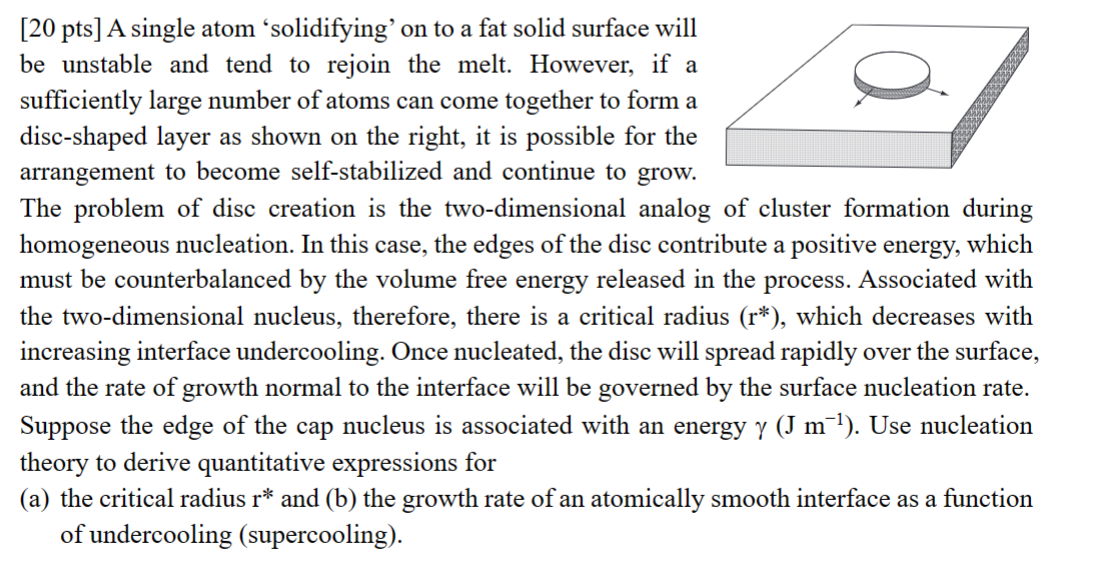Answered step by step
Verified Expert Solution
Question
1 Approved Answer
[ 2 0 pts ] A single atom 'solidifying' on to a fat solid surface will be unstable and tend to rejoin the melt. However,
pts A single atom 'solidifying' on to a fat solid surface will
be unstable and tend to rejoin the melt. However, if a
sufficiently large number of atoms can come together to form a
discshaped layer as shown on the right, it is possible for the
arrangement to become selfstabilized and continue to grow.
The problem of disc creation is the twodimensional analog of cluster formation during
homogeneous nucleation. In this case, the edges of the disc contribute a positive energy, which
must be counterbalanced by the volume free energy released in the process. Associated with
the twodimensional nucleus, therefore, there is a critical radius which decreases with
increasing interface undercooling. Once nucleated, the disc will spread rapidly over the surface,
and the rate of growth normal to the interface will be governed by the surface nucleation rate.
Suppose the edge of the cap nucleus is associated with an energy Use nucleation
theory to derive quantitative expressions for
a the critical radius and b the growth rate of an atomically smooth interface as a function
of undercooling supercooling

Step by Step Solution
There are 3 Steps involved in it
Step: 1

Get Instant Access to Expert-Tailored Solutions
See step-by-step solutions with expert insights and AI powered tools for academic success
Step: 2

Step: 3

Ace Your Homework with AI
Get the answers you need in no time with our AI-driven, step-by-step assistance
Get Started


